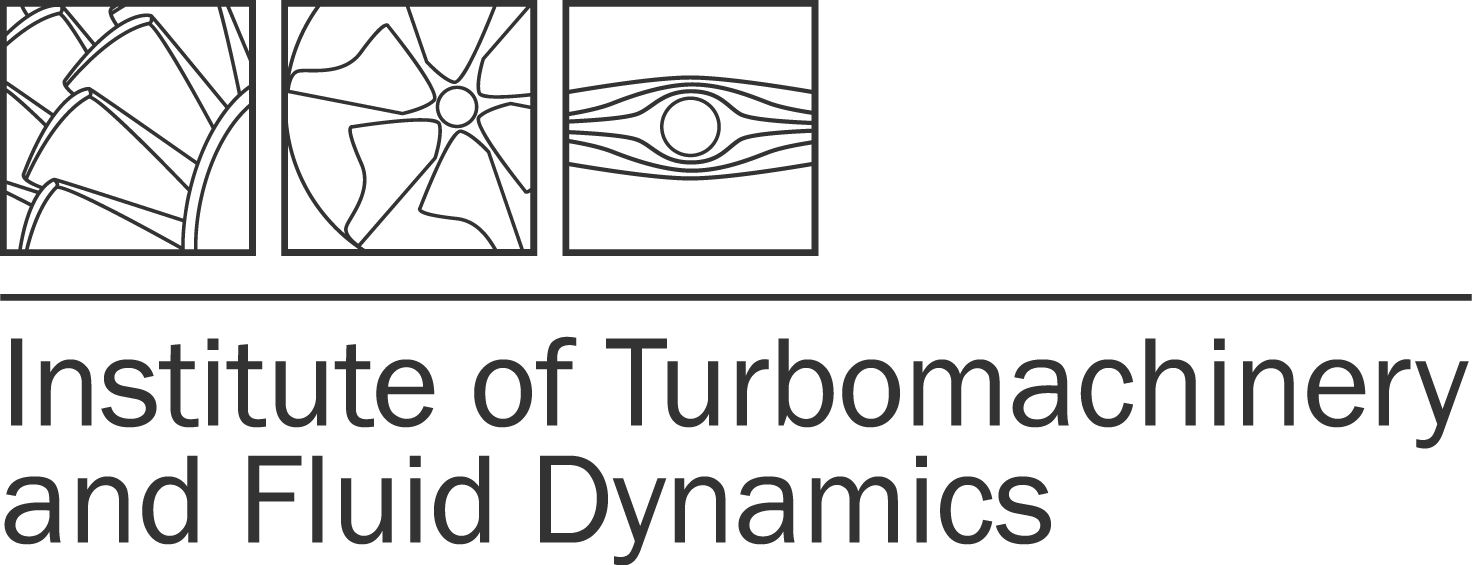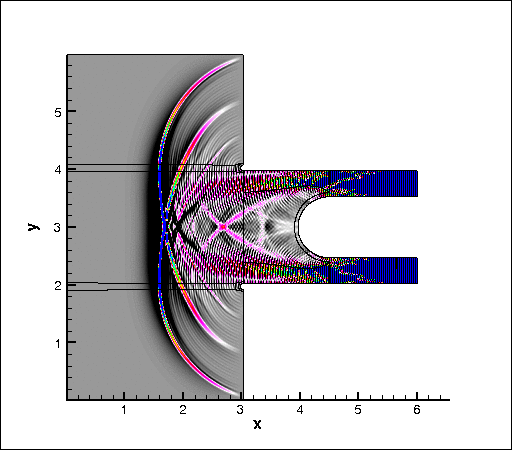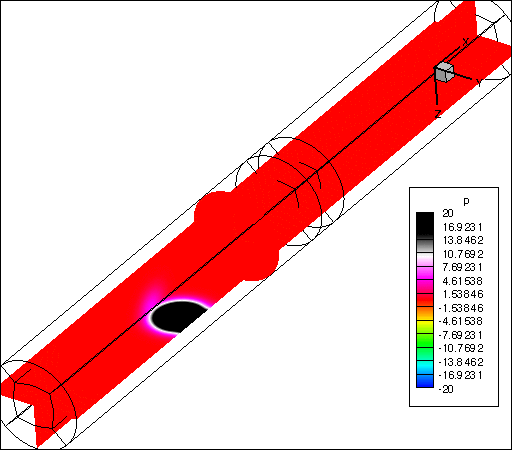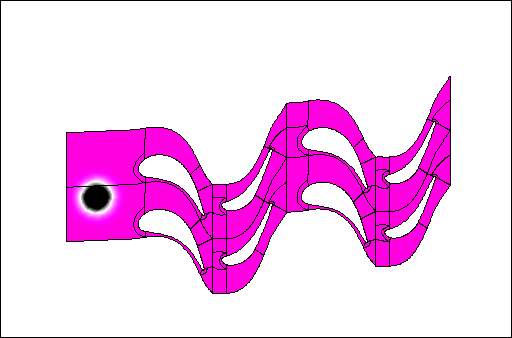Description
An acoustic domain is simulated using a hybrid approach. Firstly, a steady or unsteady CFD simulation is carried out to determine the flow field of the acoustic domain. The CFD solution contains both the convective transport information and the turbulence information, from which the acoustic sources are then modeled. The input for the CAA simulation of the acoustic field is provided by the CFD flow field solution. The pure sound transport can then be calculated with a different system of equations, e.g. the linearized Euler equations (LEE) or the acoustic perturbation equations (APE).
The main difference between CAA and CFD are the different length scales. The hydrodynamic perturbations, calculated with CFD methods, move at the same velocity as the flow. In contrast, the acoustic perturbations move at the same velocity as the sound.
Field of Application
- Blade cascades
- Ducts
- Aircraft engine inlets
Software Packages
-
PIANO
The software PIANO (Perturbation Investigation of Aerodynamic Noise, DLR) is a finite-difference procedure that calculates the sound generation and transmission in an inhomogeneous flow. The simulations are performed in the time domain and both tonal noise and broadband noise can be calculated. At the TFD, PIANO is used to calculate the sound transport in blade cascades and compressor inlets.
-
COMSOL Multiphysics
COMSOL is a finite-element-method (FEM) that is appropriate for simple applications in time or frequency domains.
-
linearTRACE
The finite-volume method linearTRACE (Turbomachinery Research Aerodynamic Computational Environment, DLR) is designed for frequency domain problems in turbomachinery applications.
Contact


Deputy Group Leader Aeroacoustics, Aeroelasticity and Wind Energy
30823 Garbsen


Deputy Group Leader Aeroacoustics, Aeroelasticity and Wind Energy





